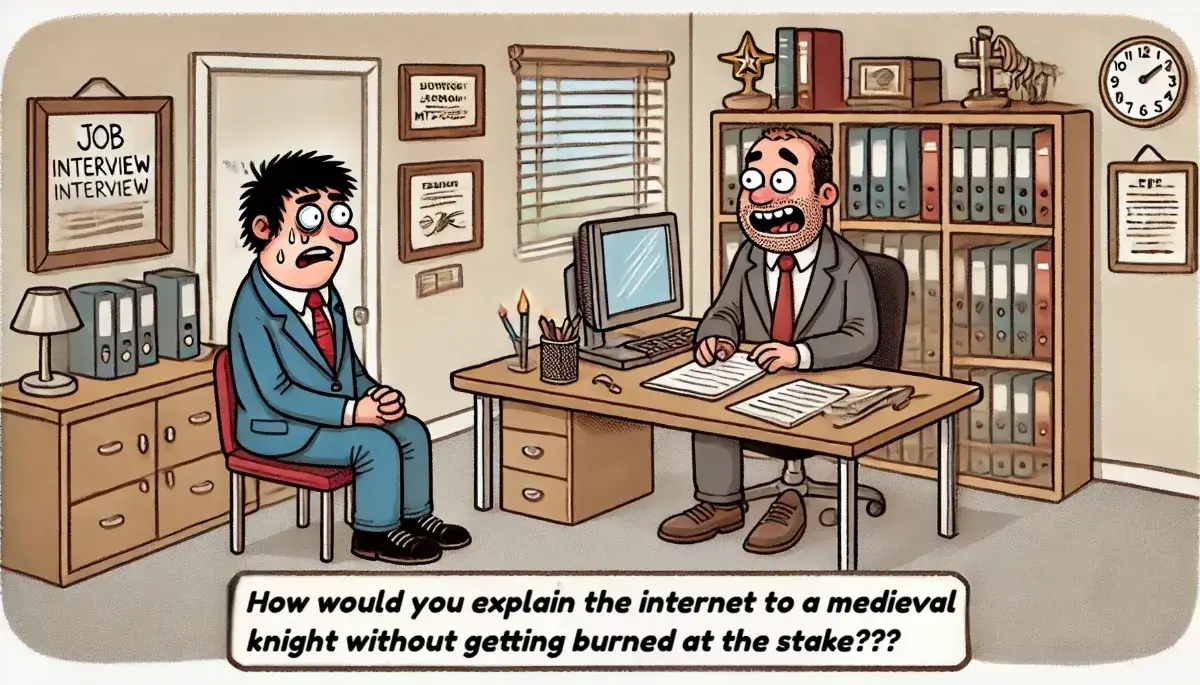Businesses love to proclaim, “Our people are our most important asset.” Look at any company website, annual report, or motivational poster in the break room, and you’ll see variations of this same proud declaration.
Yet, let’s face it: when it comes to the actual hiring process—the single most important step in getting the right people—we habitually drop the ball.
The average time a hiring manager spends
on a resume is 7 seconds
(or less)
We spend thousands of dollars (and countless hours) perfecting internal workflows, investing in cutting-edge technology, and training our teams to near perfection. But when it comes to interviewing—the crucial gatekeeper to our organization—we hand it off casually to people who’ve rarely, if ever, received formal training. Imagine entrusting your most valuable asset to someone who has no structured skills to assess its worth. Sounds absurd, right? Yet, it’s exactly what most companies are doing every day.
The Resume Review Problem: Blink and You Miss It
Here’s a number to keep you awake tonight: hiring managers spend an average of just 7 seconds or less scanning a resume. Seven seconds—about the same amount of time it takes to sip your coffee or scroll past an ad on LinkedIn. In that blink-of-an-eye glance, entire careers are reduced to a few skimmed keywords. No wonder businesses consistently miss out on game-changing hires.
Think about your last star hire—the person who brought fresh ideas, energy, and results into your organization. Now imagine if you’d overlooked them because their resume didn’t “pop” in those critical seven seconds. The reality is, many companies do exactly that, day after day.
Interviewing: The Untrained Art
Even when candidates slip through the resume gauntlet, they’re often subjected to interviews handled by managers who haven’t received any meaningful training in interviewing techniques. Think about this for a second: how often have you or your management team received structured, best-practice training on interviewing? If you’re like most executives, the answer is probably somewhere between “never” and “what training?”
When interviewers aren’t properly prepared, three critical problems emerge:
- Misalignment of Skills and Requirements: Interviewers often ask generic questions that fail to assess whether the candidate truly fits the specific role. Without a clear understanding of the job requirements, interviews become guesswork.
- Reliance on Gut Instinct: Without structured techniques, interviewers frequently default to their personal biases or gut feelings. Studies repeatedly reveal that “gut-based” interviewing results in inconsistent hiring and overlooked talent.
- Superficial Evaluations: Complex skills—like leadership, innovation, or strategic thinking—are reduced to surface-level impressions in brief, unfocused exchanges.
The result? Mediocre hires, mismatched talent, and a painfully expensive cycle of turnover and retraining.

The Hidden Costs of Poor Interviewing (Hint: It’s a Lot)
Hiring mistakes aren’t just inconvenient—they’re costly. According to research by the Harvard Business Review, the cost of a bad hire can equal 30% or more of that person’s annual salary. But that’s just the tip of the iceberg. The real damage goes deeper:
- Lost Opportunity: Every lackluster hire is a missed chance to recruit a star performer who could have transformed your team.
- Team Morale and Culture Damage: One bad hire can disrupt team dynamics, sap motivation, and damage your carefully cultivated company culture.
- Leadership Frustration: Managers spend countless hours coaching and managing the wrong hires, diverting their attention from strategic priorities.
Simply put, untrained interviewers and sloppy hiring methods don’t just cost money—they cost momentum.
Fixing the Broken Hiring Process: 4 Proven Steps
Luckily, this isn’t rocket science—in fact, it’s something far more powerful: common sense. It’s about shifting your mindset and investing in structured, intentional interviewing. Here’s how:
- Implement a Structured Interview Framework:
Create standardized, role-specific questions and clearly defined evaluation criteria. Structured interviews reduce subjectivity, ensure consistency, and significantly improve your chance of identifying genuine high performers. - Train Interviewers on Active Listening Techniques:
Equip your hiring managers with skills to probe deeper, ask meaningful follow-ups, and truly understand a candidate’s potential. This turns interviews into insightful conversations rather than superficial Q&A sessions. - Hold Regular Interview Calibration Sessions:
Periodically gather your hiring team to align methods, share insights, and refine your interviewing approach. Continual calibration ensures your process evolves with your business needs and lessons learned. - Establish Feedback Loops:
Continuously refine your interviewing processes by soliciting feedback from both candidates and interviewers. These insights help you identify blind spots and keep your hiring sharp and effective.
It’s Time to Match Actions to Words
If we genuinely believe that our people are our most important asset, then it’s time to stop saying it—and start acting accordingly. The quality of your team is directly proportional to the quality of your interviewing process. Great businesses don’t leave such critical decisions up to chance, gut instinct, or seven-second skims.
We invest heavily in perfecting every other aspect of our businesses—why wouldn’t we give hiring, the single most impactful function, the same level of commitment?
Purpose-driven leadership is about being intentional in every action taken within your organization—whether it’s in strategy, processes, hiring, or performance measurement—all directly aligned with the mission. This alignment drives growth and profitability, ensuring that every decision contributes to a cohesive, purpose-driven culture.
For those interested in diving deeper into this transformative approach, I invite you to explore my book, “Built to Soar,” where I delve into the principles of purpose-driven leadership and how you can implement them effectively in your organization. Learn more at BuiltToSoarBook.com.
When everything in your organization is designed with purpose, you create an environment where strategic alignment thrives, driving sustainable growth and fostering a culture of accountability, innovation, and success. Embrace this journey of purpose-driven design, and watch your organization not just soar, but truly thrive in a competitive landscape.


